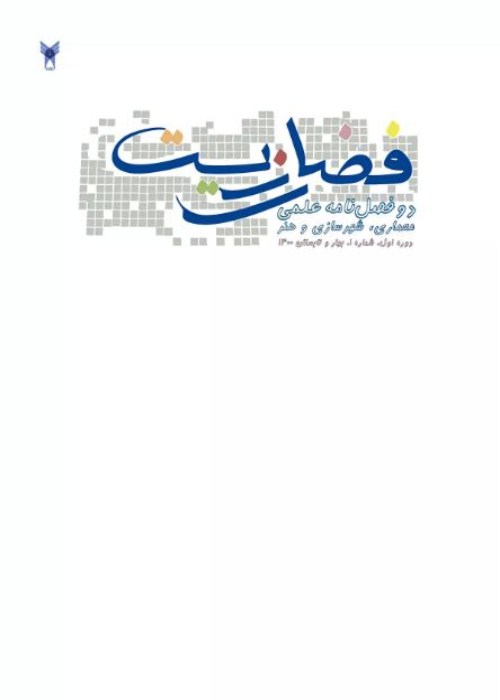Thermal comfort evaluation of occupants in recently built buildings in the mountainous area of humid and moderate climate during the summer (case Study: Ali Abad Katul)
In this article, we examine the thermal comfort levels of residents living in new facilities in the mountainous area of Aliabad Katul in the Golestan province. This area has its own climatic conditions and is influenced by moderate climate conditions due to its location in the southern region of the Caspian Sea. Golestan is located in the temperate and humid region of the shores of the Caspian Sea. The more we move to the east on the southern shores of the Caspian Sea, the less humidity and rainfall. In this area, the average temperature is between 25 and 30 degrees Celsius in summer and 0 and 5 degrees Celsius in winter. The four selected buildings are located in the mountainous area of Rig Cheshme and are built on two floors and the second floor is 3 meters above the ground, and each floor has an area of 45 square meters. The south porch is 10.3 meters in length and 2.95 meters in width. Most of the primary openings are located in this area of the building, which also serves as the main entry to the units. These buildings have one bedroom, one bathroom and six openings. These buildings were chosen for the study because all the new buildings in the area was strikingly similar to them in terms of construction techniques, materials, and their floor plans. The sole heating source in the main room is a wood fireplace, while the only cooling source in the building is a ceiling fan. These buildings are influenced by the local traditional architecture, including broad porches on the southern side that face the valley. In this study, the participants' comfort levels were assessed, and their opinions were gathered utilizing the assembled questionnaires. Two data loggers were also employed to capture the relative humidity and air temperature of the inside and outside environments at the same time the questionnaires were being completed. For one week in July, the hours for collecting opinions and gathering data were 10:00–18:00. Since July has the warmest weather of the year, there is a higher than usual demand for cooling solutions during this month. One data logger is placed outside (on the south porch and in the shade) at a height of 1.2 meters, while the other is placed inside the residences in the center of the room at the same height. Cross ventilation was set up and air flow speed was monitored during the data collection period in order to examine the impact of air flow intensity on relative humidity and air temperature within the building. The volume of the questionnaire was set at 100 since this study was conducted in high-altitude regions and in Ali Abad Katul villages with a population of less than 1000 people. These questionnaires were not passed out to those under the age of 18 or those over the age of 60 in order to validate the research's findings, and the ones they filled out were also removed. considering the area's limited population, 87 completed questionnaires were chosen for this study. The validity and reliability of the questionnaire were checked using the SPSS 26 program. We utilized the Cronbach's alpha test for this reason; the Cronbach's alpha value is equal to 0.816, which shows moderate and acceptable reliability, when examining at questions on the same spectrum concerning people's responses to their thermal sensations and reactions. The surveys gather information on people's age, body mass index (BMI), length of residency, thermal sensation, thermal expectations, sources of discomfort in the space, and hours of discomfort. Finally, the findings were examined by investigating various aspects of people's comfort levels. According to the study's findings, those who had lived in the area for a longer time were more adapted to its environmental conditions, and a factor like clothing had no impact on whether they felt comfortable or uncomfortable. The day's maximum temperature occurred in the afternoon, and the presence of high relative humidity in the air and a lack of natural ventilation are two factors that led to people's discomfort. For this study, the regression slope is 0.329, the neutral temperature is 26.1°C, and the acceptable range is 22.9°C to 29.5°C (for the 90% of people's comfort).
- حق عضویت دریافتی صرف حمایت از نشریات عضو و نگهداری، تکمیل و توسعه مگیران میشود.
- پرداخت حق اشتراک و دانلود مقالات اجازه بازنشر آن در سایر رسانههای چاپی و دیجیتال را به کاربر نمیدهد.




